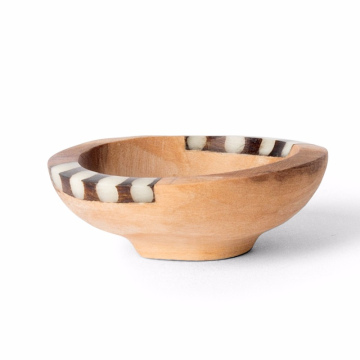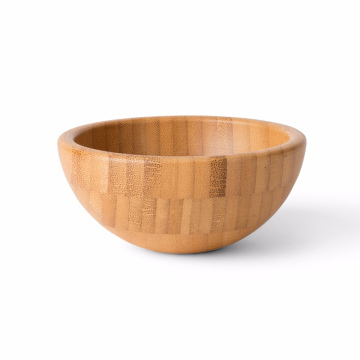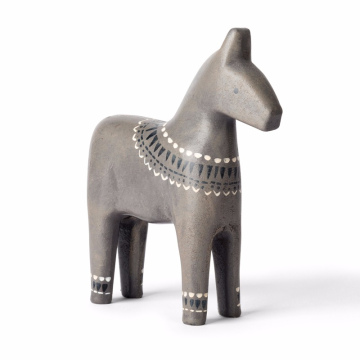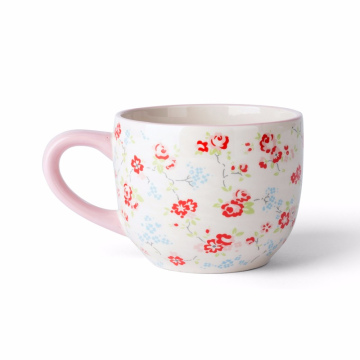Introduction to Donburi
Donburi, a cherished staple in Japanese cuisine, represents a harmonious blend of history, culture, and flavor. Originating from traditional dining practices, donburi refers to a bowl of steamed rice topped with a variety of ingredients, creating a meal that is nourishing and satisfying. Its inception can be traced back to the Edo period when the concept of serving food in a bowl gained popularity among the rising merchant class. As a result, donburi emerged as an accessible yet flavorful dish, embodying not only convenience but also creativity in its presentation.
The significance of donburi extends beyond mere sustenance; it showcases the diversity and richness of Japanese culinary arts. Each donburi is a personal expression of regional flavors, seasonal ingredients, and cooking techniques. This versatility has propelled the dish into various forms, enabling chefs and home cooks alike to innovate while preserving the essence of this time-honored meal. Today, donburi can be found in myriad variations, ranging from the richly flavored gyudon (beef donburi) to the delicate sashimi donburi, demonstrating its adaptability to different tastes and preferences.
At its core, a donburi consists of three essential components: rice, toppings, and sauce. The rice is typically short-grain Japanese rice, known for its sticky texture and ability to hold flavors. The toppings can vary widely, encompassing proteins like chicken, seafood, or vegetables, often cooked in flavorful broths or glazes to enhance their taste. Completing this delightful dish, sauces play a pivotal role in imparting depth and umami, transforming a simple bowl of rice into an extraordinary culinary experience. As we explore the various donburi varieties, it becomes clear that this beloved dish serves as a canvas for culinary creativity, marrying tradition with innovation.
One Bowl, Endless Flavors: Exploring Japan’s Donburi Culture
Explore the world of Donburi, a beloved staple of Japanese cuisine that combines rice, flavorful toppings, and savory sauces. Discover its rich history, cultural significance, and modern adaptations. Learn about popular varieties like gyudon, katsudon, and unadon, and find tips and recipes for making your own delicious donburi at home. Whether you're a seasoned chef or a curious beginner, this culinary journey will inspire you to embrace the versatility and creativity of this comforting dish.
Art and Flavor of Karaage: Exploring Japan’s Delicious Fried Chicken
Japanese culinary culture is renowned for its precision, balance, and the extraordinary flavors that emerge from seemingly simple dishes. One such dish, karaage, stands out as a beloved comfort food that has taken both local and international kitchens by storm. Karaage is essentially a form of fried chicken, but its distinct preparation and flavor profile elevate it into an art form of Japanese cuisine. With its golden, crispy exterior and tender, juicy meat, karaage is a dish that showcases the delicate interplay between seasoning, technique, and texture. In this exploration, we dive deep into the art and flavor of karaage, uncovering the secrets behind its popularity and the culinary techniques that make it a standout dish in Japanese cooking.
The origins of karaage trace back to early Japanese culinary traditions, with influences drawn from Chinese cooking methods. The term "karaage" itself refers to the method of frying food in oil, and while it most commonly refers to chicken, the technique can be applied to other ingredients like fish or tofu. The early culinary roots of karaage were influenced by the Chinese technique of deep-frying, and this was adapted into the Japanese style, eventually becoming a staple of the nation's cuisine. Japanese chefs skillfully blended their culinary traditions with the deep-frying methods, creating a fried chicken dish with a unique and complex flavor profile. The perfect balance of savory, salty, and umami tastes became a hallmark of this iconic Japanese fried chicken.
Karaage is more than just a casual dish; it’s a cultural culinary treasure. When you look at karaage’s rise from a simple comfort food to a beloved national dish, it’s clear that its popularity is due to the precise culinary techniques involved. Japanese chefs focus on creating a balance of textures, from the crispy, golden coating to the juicy, tender meat inside. The marinade, often a mix of soy sauce, sake, ginger, garlic, and a touch of sugar, infuses the chicken with a complex flavor that elevates the entire culinary experience. Karaage is not just a dish; it’s a manifestation of Japanese dedication to crafting food that appeals to both the senses and the soul.
Perfecting the Technique of Frying Karaage
The technique behind preparing karaage is essential to its success, and achieving the perfect fried chicken requires a balance of culinary science and artistry. The key to perfect karaage lies in the method of marinating the chicken and the precise frying process. Most chefs recommend marinating the chicken pieces for several hours, allowing the seasoning to penetrate deeply into the meat. The marinade, which includes soy sauce, ginger, garlic, and other spices, is essential for developing the rich umami flavor that defines the dish. The longer the chicken marinates, the more pronounced the flavor becomes, making this preparation a crucial part of the culinary process.
Once the chicken has marinated, it is typically coated in a mixture of flour and cornstarch. This coating provides the crispy exterior that distinguishes karaage from other fried dishes. The flour mixture helps seal in the juices of the chicken while frying, creating a satisfying crunch that contrasts beautifully with the tender meat inside. The culinary skill lies in achieving the perfect golden brown color without overcooking the chicken. A deep-frying technique is employed, with the chicken fried in small batches to maintain the oil’s temperature. Maintaining the right oil temperature ensures that the chicken becomes crispy without absorbing too much oil, which is crucial for a clean and balanced flavor.
The process of frying karaage involves more than just submerging the chicken in oil. The culinary art of karaage demands careful attention to timing and temperature. The chicken is often fried in two stages, with the first fry at a lower temperature to cook the meat thoroughly and a second fry at a higher temperature to crisp the coating. This double frying method gives karaage its signature crispness while preserving the juiciness of the chicken. Understanding these techniques and applying them with precision is what separates mediocre fried chicken from the tender, crispy masterpiece that is karaage.
Essential Ingredients That Define Karaage
One of the most fascinating aspects of karaage is its reliance on a few simple, but powerful ingredients. Each element contributes to the overall flavor, making the dish more than just fried chicken. The marinade plays a pivotal role, with soy sauce being the primary ingredient that imparts a salty, umami depth to the chicken. Along with soy sauce, the addition of sake, ginger, garlic, and sometimes a touch of mirin or sugar creates a harmonious blend of savory and slightly sweet notes. These ingredients work together in perfect balance, ensuring that each bite of karaage bursts with flavor. The seasoning is essential, as it enhances the natural taste of the chicken while adding complexity to the culinary experience.
Another important aspect of karaage is the flour coating. While some variations use only all-purpose flour, it is common for chefs to mix flour with cornstarch to achieve a lighter, crunchier texture. The cornstarch helps create a delicate crispiness without overpowering the chicken’s tender meat. This culinary choice is key to getting that perfect bite where the coating shatters upon contact, releasing the juicy, flavorful chicken inside. The balance of flour and cornstarch varies between recipes, but the goal is always to create a coating that complements the chicken without overwhelming it.
Lastly, the choice of oil used in frying plays a significant role in achieving the perfect karaage. Japanese chefs typically use a neutral vegetable oil, such as canola or sunflower oil, because it allows the chicken to cook evenly without imparting any strong flavor to the dish. The quality of the oil is crucial, as the oil should be able to maintain a consistent temperature throughout the frying process. The right oil not only ensures that the chicken cooks perfectly but also helps achieve that ideal crispness without making the dish greasy. This focus on high-quality ingredients and culinary technique is what elevates karaage from a simple fried dish to a true gastronomic delight.
Karaage Variations Across Japanese Cuisine
While karaage is most commonly associated with fried chicken, it has many regional variations that reflect the diversity of Japanese cuisine. In some areas of Japan, karaage is served as part of a bento box, accompanied by rice and pickled vegetables. In other regions, the dish is presented as a side dish or snack, often paired with cold beer, making it a popular choice in izakayas (Japanese pubs). Each variation of karaage may include unique seasoning blends, different cooking methods, and regional accompaniments that make the dish even more diverse in its culinary expression. Exploring these variations provides a deeper understanding of how karaage has been adapted and embraced across Japan.
In Hokkaido, for example, the locals have a distinct way of preparing karaage. The chicken is sometimes marinated with miso, giving it a richer, deeper flavor. This version of karaage, known as “Miso Karaage,” is popular in the northern regions and reflects the local love for miso-based dishes. The addition of miso adds a slightly fermented, savory depth to the chicken, making it a perfect pairing with the region’s cold climate. This culinary variation shows how regional ingredients and tastes can influence the preparation of a seemingly simple dish like karaage, turning it into something unique and specific to that region.
In Okinawa, another variation called “Taco Karaage” has emerged, incorporating the flavors of tacos with the crispy fried chicken. This fusion dish blends the crispy texture of karaage with the flavors of taco seasoning, including chili powder and cumin. The Okinawan taco karaage is often served with a side of lettuce, tomato, and sour cream, creating a delicious marriage of Japanese and Mexican culinary traditions. This innovation in karaage highlights the versatility of the dish and how it continues to evolve while remaining true to its roots. Such variations show how karaage continues to inspire creativity within the culinary world, pushing the boundaries of what this simple fried chicken can become.
Karaage: A Symbol of Culinary Tradition and Innovation
Karaage is a perfect example of how Japanese culinary traditions honor the past while embracing innovation. The dish has stood the test of time, and its ability to evolve while retaining its core principles demonstrates the genius of Japanese culinary culture. From its humble beginnings as a method of frying food to its transformation into an internationally recognized dish, karaage represents the perfect blend of history and modernity in Japanese cuisine. Whether served as a snack, a side dish, or the main event, karaage continues to captivate food lovers around the world, proving that great culinary artistry never goes out of style.
At the heart of karaage’s enduring popularity is its ability to deliver a sensory experience that appeals to all aspects of taste, texture, and aroma. The crispy coating, the savory marinade, and the tender chicken combine to create a culinary masterpiece that delights with every bite. Furthermore, the dish is endlessly adaptable, with countless variations across Japan, each bringing a new twist to the traditional formula. Karaage’s success lies in its simplicity, yet its ability to be personalized and elevated by skilled chefs. It is a dish that celebrates both the art of cooking and the joy of eating.
Karaage’s place in the global culinary scene is a testament to the universal appeal of well-crafted food. Whether enjoyed in a cozy izakaya in Japan or recreated at home in kitchens around the world, karaage continues to bring people together over its delicious, crispy goodness. As culinary tastes evolve and more people discover this Japanese delicacy, karaage will undoubtedly remain a symbol of both Japan’s rich culinary heritage and its innovative spirit.




